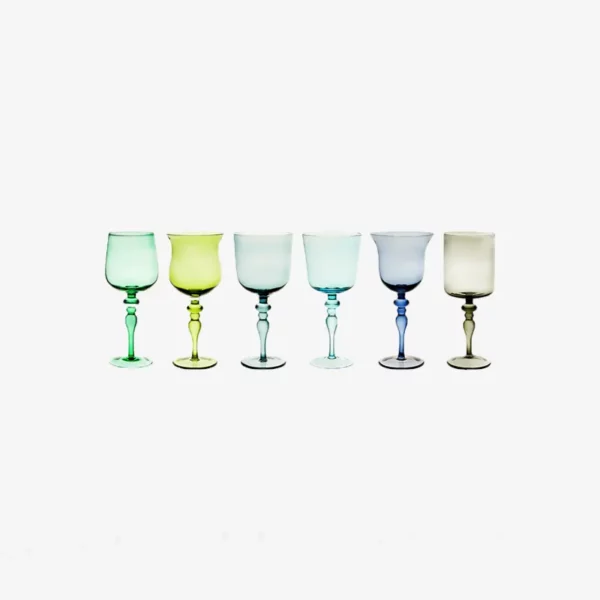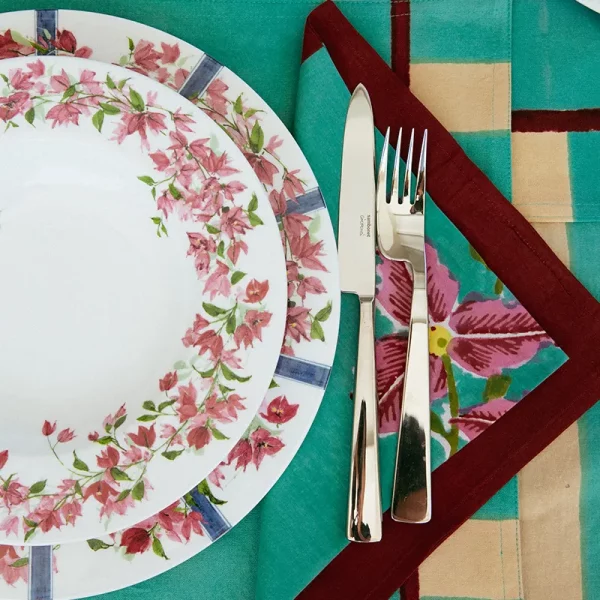- BY ISSIMO
- December 19, 2023
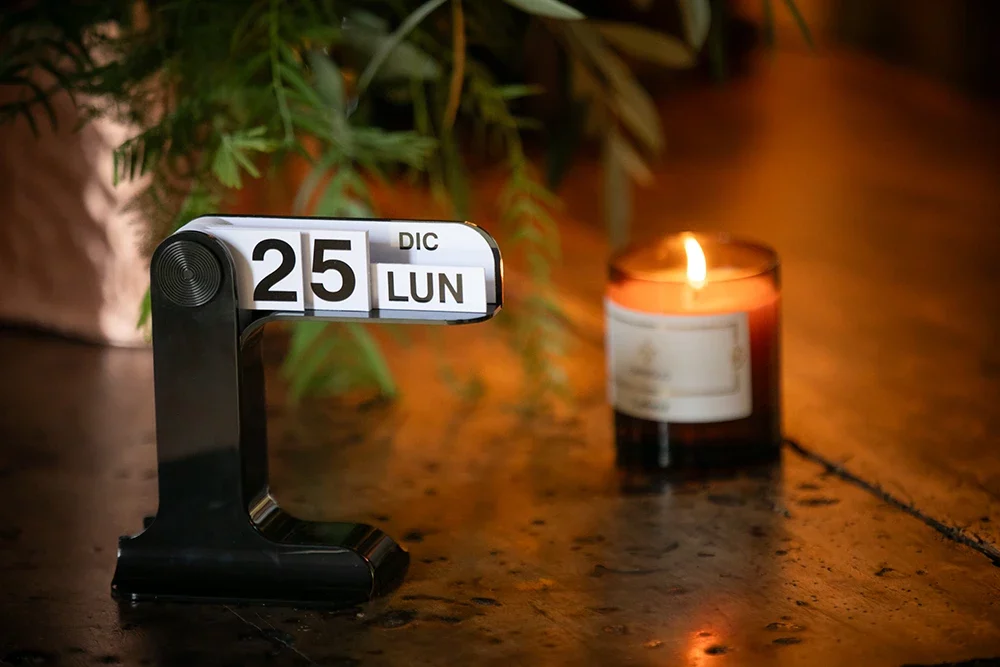
Some recipes just capture the joy and tradition of Christmas, don’t they? Whether it’s a heart-warming entrée that has been passed down from generations, or a deep fried dessert that looks just as glorious as it tastes, we can always count on certain dishes to spark up the festive spirit at any age.
Let the festive feasting begin as we share our favourite traditional entrèe, main and dessert recipes from the regions of Abruzzo, Lazio and Campania. Discover a combination of ingredients, flavours and courses that have been at the heart of the Christmas family table for years.
Buon appetito and happy holidays!
ENTRÉE – ABRUZZO
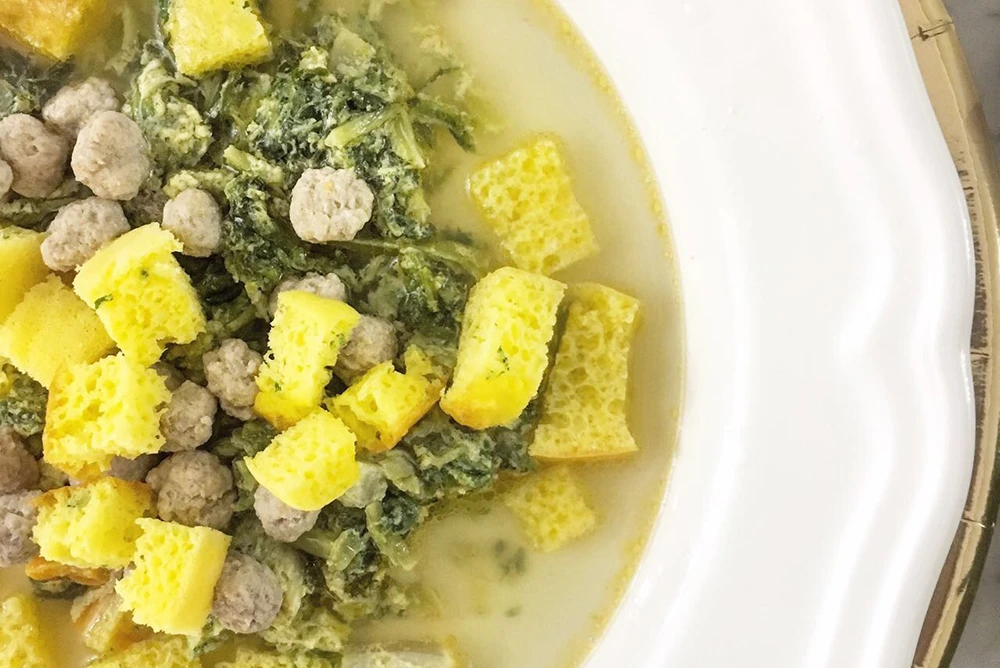
Traditional Christmas Broth
Christmas broth is a must. In fact, is it even Christmas without some kind of broth on the table? Every family has its own recipe for this traditional Abruzzese dish, which is passed down from generation to generation. As early as November 1st, families begin the search for the best chicken and the freshest ingredients to prepare this dish, which is at the heart of the Abruzzo region. This broth captures the soul-warming comfort of the festive season, and brings back childhood memories for many people when they share a bowl (or four) with their family during Christmas time.
Chicken broth
– 1/2 chicken
– 1 celery stalk
– 1 carrot
– Nutmeg to taste
Cardoon
– 500 gr cardoon (similar to artichoke hearts)
– Chicken broth
Rustic pizza
– 4 eggs
– 75 gr. Parmesan
– 30 gr. Flour
– Finely chopped parsley
Meatballs (Pallottine)
– 250 gr. finely minced veal
-20 gr. Parmesan cheese
– Parsley
-Salt
Recipe serves four
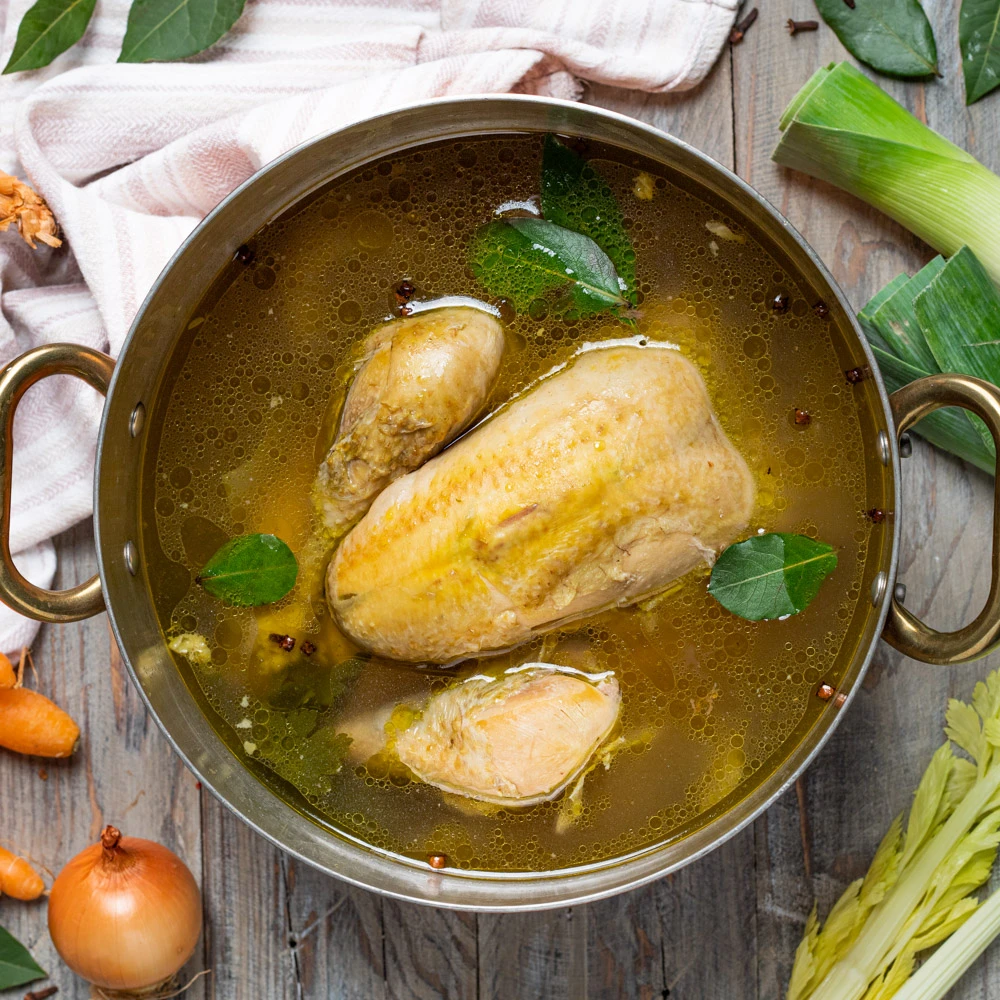
1. To prepare the chicken broth, combine the chicken with celery, carrot and nutmeg. Simmer for about two hours. It’s always best to test and taste the chicken to see if it’s the right time to turn off the heat. Once cooked, cool and strain well.-
2. Wash the cardoon and remove the tougher outside petals. Cut them into cubes or small pieces and boil in water for about twenty minutes, then drain. Simmer them in a little chicken broth for another 20 minutes to finish the cooking process.
3. To create the small meatballs, mix the finely minced veal, Parmesan cheese and parsley. Roll them into small balls and cook them in a little broth. Drain them.
4. For the rustic pizza, mix four egg yolks together with the Parmesan cheese, flour and parsley. In a bowl, whisk the egg whites well and add them to the other egg mixture. Pour everything into a buttered and floured baking tin. Bake in a hot oven at 160°C for about 20 minutes. Once cooled, cut the pizza into small cubes.
5. Once all elements are ready, the dish can be served. It’s a family ritual to serve this one dish at a time; with the broth first, followed by the cardoon, meatballs and finally, the pizza rustica.
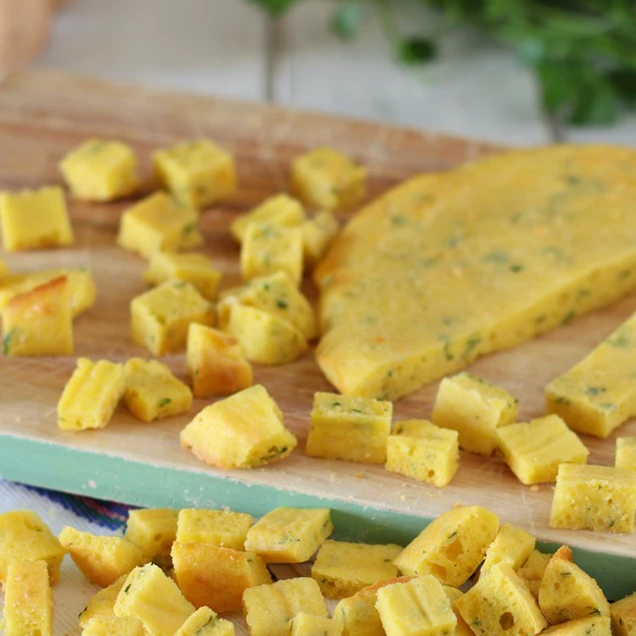
MAIN COURSE – LAZIO
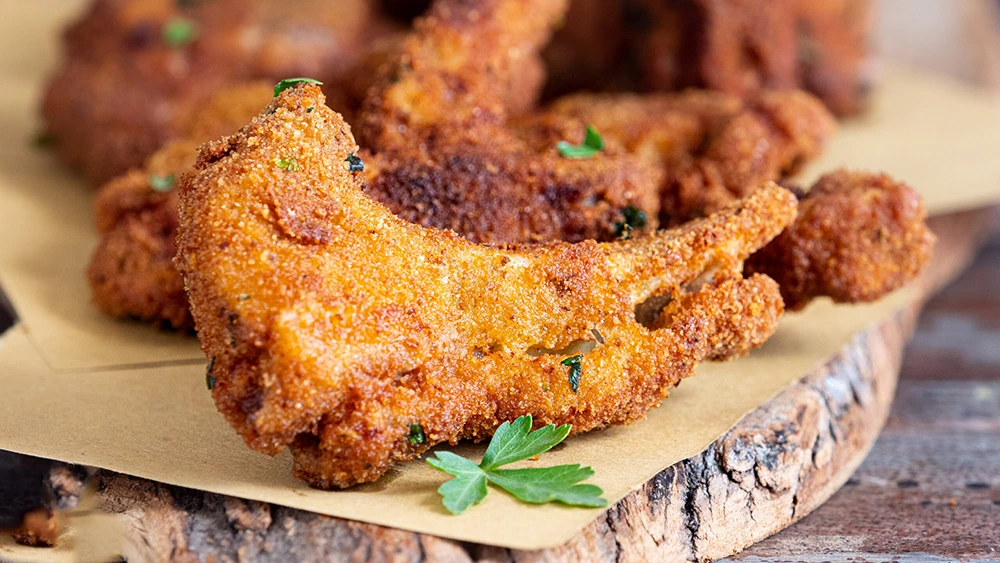
Costolette d’Abbacchio
This recipe for Roman-style lamb chops is typical of Lazio tables. It’s prepared during many festive and special occasions throughout the year, but its aromas and feasting rituals represent an enduring holiday tradition for many people. Besides being a delicious and comforting dish (yes, you are allowed to use your hands when eating it!) it’s also very easy to prepare and celebrates a typically Italian approach to serving grilled meat for secondi (second course). The word ‘abbacchio’ is unique to Rome, and it refers to the variety of milk-fed lamb used for this dish.
For the fried chops:
8 lamb chops (or abbacchio)
Salt (to taste)
Pepper (to taste)
3 eggs
Breadcrumbs (as needed)
Peanut oil (for frying)
For marinating the lamb chops:
1 lemon
2 sprigs of rosemary
2 cloves of garlic
Recipe serves four
1. Firstly,prepare a simple marinade by squeezing the lemon juice into a large bowl, then adding the halved garlic cloves and a few sprigs of rosemary. Let the lamb chops marinate in this mixture for a couple of hours in the refrigerator.
2. After the chops have marinated, crack the eggs into a bowl with a pinch of salt and pepper. Beat them vigorously with a fork.
3. Dip the lamb chops, one by one, into the beaten eggs, ensuring they are entirely coated. Drain briefly and coat them in breadcrumbs, gently pressing with your hands to make sure the breadcrumbs stick to the entire surface.
4. Heat a generous amount of peanut oil in a pan or deep fryer. Once very hot, carefully place the lamb chops into the oil (ISSIMO Tip: check the temperature by inserting the tip of a wooden utensil called a ‘cucchiarella’ and see if it sizzles).
5. Cook the chops two at a time to avoid lowering the oil temperature too much. Let them fry for 8-10 minutes. If the lamb chops are fully submerged in the oil, there’s no need to turn them, but if they tend to partially float, flip them halfway through the cooking.
6. Once they are nicely golden, remove them and let them dry on a paper towel; sprinkle them with some salt while they are still hot.
If you wish to prepare them in advance, you can bread them the day before and store them in the refrigerator, taking them out just before frying.
These chops are to be eaten strictly with your hands, of course! The right cut of meat is necessary for this dish, ask your butcher to cut 8 chops, preferably taken from a rack cut. This means the lamb chops can be ‘held’ precisely by the bone part.
DESSERT – CAMPANIA
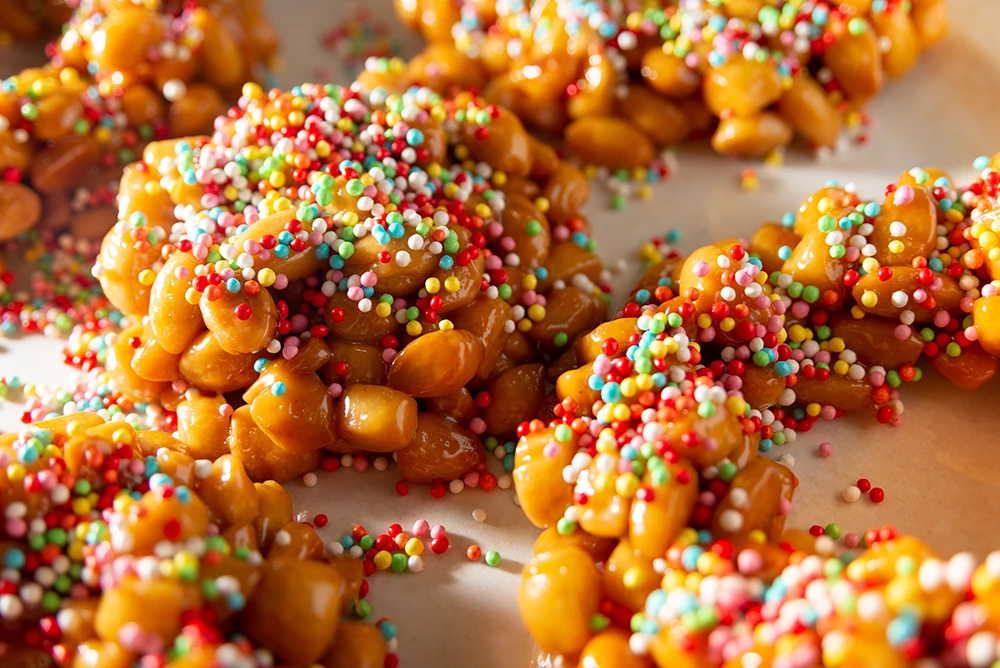
Struffoli
Struffoli is a Neapolitan dessert served both at Christmas and New Year’s Eve. They are small deep fried balls of sweet shortcrust pastry that were traditionally made in Naples using lard, but they are usually now prepared with butter. Struffoli are dipped in honey and showered with a topping of coloured sprinkles, sugar decorations or even candied fruit. A hint of anise liquor and citrus in the dough makes these morsels incredibly delicious, addictive even!
For the dough:
450g of flour
30g of sugar
3 eggs
1 orange
1 lemon
90g of butter
30ml of anise liqueur
Pinch of salt
Peanut seed oil
For the topping:
400g of wildflower honey (you can try chestnut honey)
50g mixed candied fruits
30g of mixed coloured sprinkles (which we call diavolilli or ‘Little devils’)
1. Create a ‘well’ with the flour and add a pinch of salt. Crack the eggs into the centre of the well, add the sugar, grated lemon zest, and grated orange zest. Incorporate the previously softened butter, then the anise liqueur (which can be replaced with rum, limoncello, or orange liqueur) and start kneading with your hands.
2. Once the ingredients are incorporated into the flour, continue working the dough until you get a smooth and homogeneous ball. If the dough appears too soft, add a bit of flour. Wrap the dough ball in plastic wrap and transfer it to the refrigerator for one hour.
3. After the resting time, take the dough, soften it with your hands, divide it, and shape it into small rolls on a lightly floured work surface.
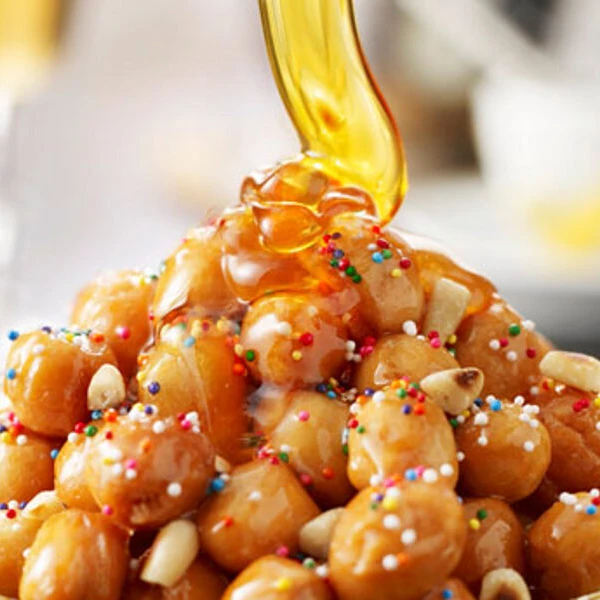
4. Cut the small rolls into pieces about 1/2 cm thick, create balls by rolling the dough in the palm of your hand. Continue this process until you have used all the dough.
5. Deep-fry the Struffoli, a few at a time, in plenty of hot seed oil, immersing them with a slotted spoon. This process will create a lot of foam during frying. It will suffice to strain it using a fine-mesh strainer and, if necessary, replace the oil.
6. They should be removed from the pot only when they are golden brown. Once removed from the pot, place them gently on a paper towel to absorb excess oil.
7. In a separate pot, gently warm the honey over low heat and pour the warm honey over the Struffoli, gently turning them so that they are all coated. Finally, add the candied fruits and coloured sprinkles, transfer the Struffoli to a serving dish, and arrange them in a pyramid shape.
A glorious traditional Italian Christmas feast needs the perfect tableware to match! Take the joy of your festive table to the next level with our pick of artisanal treasures that will enhance the colour and flair of your spread and delight your guests.


